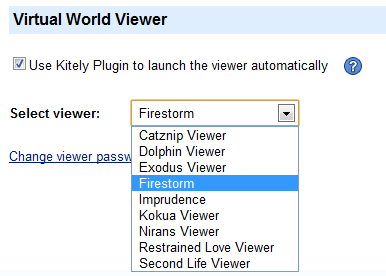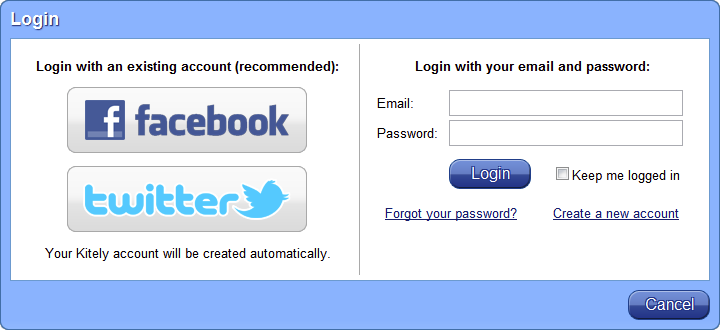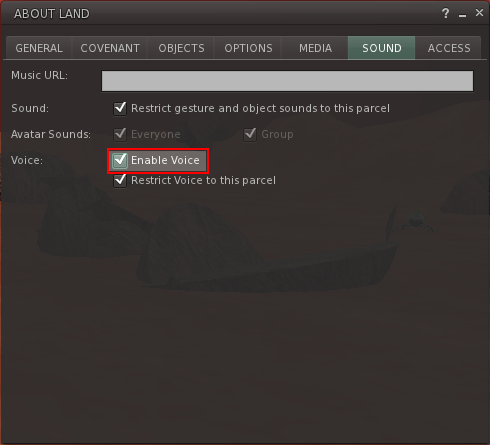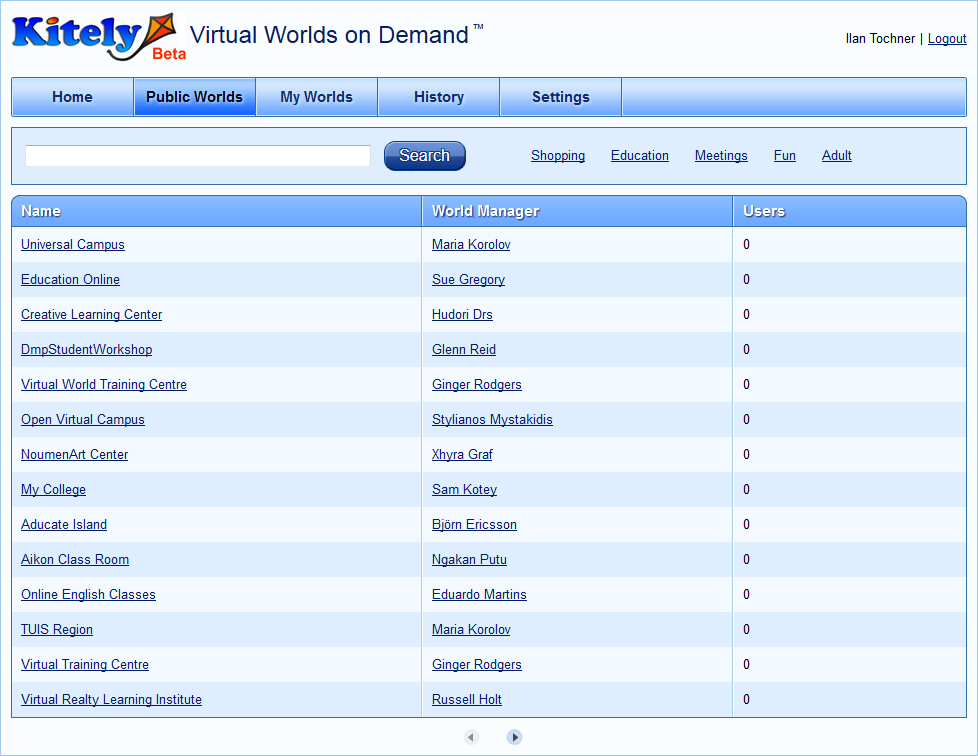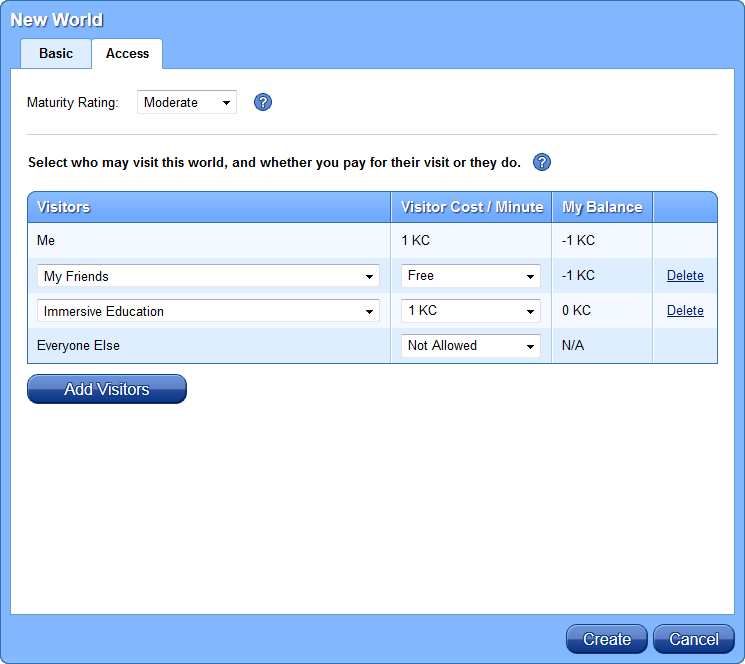After several postponements, and getting many suggestions from the community, we’ve finally rolled out our billing system today. This is a major milestone for Kitely because it puts us on the path to financial sustainability. To our users, this provides the assurance that you will be able to have all the resources you need to create and build your virtual worlds, without having to contact us every time you run out of KC.
Over the many months we’ve been in beta, people have frequently inquired regarding monthly subscriptions, free options and unlimited plans. We’ve worked hard to accommodate all of your wishes in a way that works with our business model. We hope you will be pleased with our solution.
Minutes and Kitely Credits
There are now two forms of currency: Minutes and Kitely Credits.
Minutes are used to pay for the time you spend inside virtual worlds. For each minute you spend in a world we subtract one Minute from your account. Your Minutes are non-transferable and can’t be shared with other users.
If you run out of Minutes then you can continue visiting virtual worlds if you have KC in your account: when that happens, for each minute you spend in a world we subtract one KC from your account. If you run out of both Minutes and KC then you can no longer visit virtual worlds (except for worlds made available for free access by other Kitely users, see details below).
Kitely Credits (KC) are used to pay for various services, such as copying and exporting worlds. In the future, we will enable you to use KC for virtual commerce as well.
You get Minutes and KC by subscribing to a monthly plan, or by buying KC separately. These methods are explained below. In addition, you can earn free Minutes by bringing in new users to Kitely (see details in our FAQ).
Monthly Plans
Each user has a monthly Plan. The plan determines how many Minutes and KC you get each month. KC accumulate from one month to the next. Minutes do not accumulate between months: they are reset at the beginning of each month.
Each plan also includes a certain number of free worlds that you can create. Each additional world you create beyond your plan’s quota costs 1 KC per day.
New users are automatically placed on the Free Plan. This plan includes 120 Minutes per month and 1 free world. This means that anyone can start creating their own virtual world on Kitely without having to take out their wallet and, if they are casual users, they can continue to have their own virtual world on Kitely for free. In addition, it means world creators can advertise their world widely and be assured that new users will always be able to visit the world, at least at first.
For those people who spend hours on end inside virtual worlds we now offer our Platinum Plan. This plan includes an unlimited number of Minutes per month, 5000 KC per month (an amount which would cost you $20/month to buy separately), and 100 free worlds. If you’re an avid virtual world user, or would like to provide free access to many other users, this plan provides the best value for your money.
Here are all of our available plans:
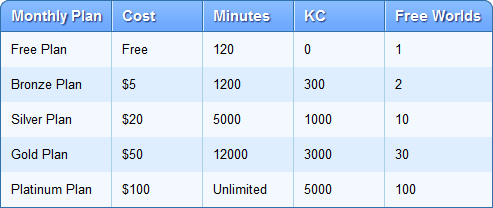
To change plans, go to the My Worlds tab, click on Get Credits and then click on the plan you want to use.
Buying Kitely Credits
You can also buy KC separately, regardless of which plan you are using. This is useful if you need more KC in the middle of the month, or if you want to try Kitely before signing up for a premium plan.
You can buy KC for the following prices:
1,000 KC – $5
5,000 KC – $20
15,000 KC – $50
To change plans, go to the My Worlds tab, click on Get Credits and then click Buy Credits.
Enabling Other Users to Access Your Worlds for Free
Normally, visitors to your worlds are charged Minutes out of their personal accounts, and you pay nothing. However, if you wish, you can enable other users to visit your worlds for free by covering this charge yourself. To do so, Edit the world, switch to the Access tab and set the price for the group of people you would like to subsidize to Free. When you do so, the selected group of visitors will pay nothing to visit that virtual world: instead, 1 KC per visitor will be deducted from your balance each minute that they remain in that world.
History Table
The history table has been enhanced to show how many Minutes and/or KC each event had cost you so you’ll be able to track how things were paid for.
Effect on Existing Users
Now that the billing system is in place we will no longer top-off people to 1,000 KC each week, as we had done previously. All the previous KC we had given out since March 2011 have been expired, and all user accounts have been automatically placed on the Free Plan.
In addition, we gave a one-time bonus of 50 KC to each of our existing beta users. These KC aren’t part of the Free Plan; new users will not get them.
Future Plans
We intend to allow using KC for virtual commerce in the future.
We are also considering allowing the conversion of KC to real-world money. However, this is difficult for both legal and regulatory reasons, so we’re not yet certain that we will do so. Please let us know what you think about this in the comment section below.
Final Words
Our billing system is sophisticated and supports many features: real-time billing (to support visiting worlds); subscriptions; two currencies; and more. Please let us know if you encounter any problems and we’ll fix them promptly.
We’ve been developing Kitely using our own personal savings for more than 3 years now. We rely on your support to allow Kitely to continue to exist, and to enable us to push the envelope in terms of what can be done with virtual worlds. If you enjoyed using our service until now, would like to use us in the future, or just wish to support our efforts then please subscribe to one of our monthly plans (or buy some KC).
Thank you! 🙂

